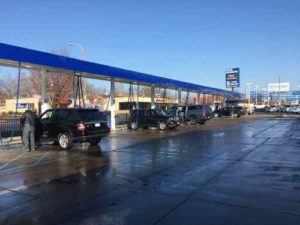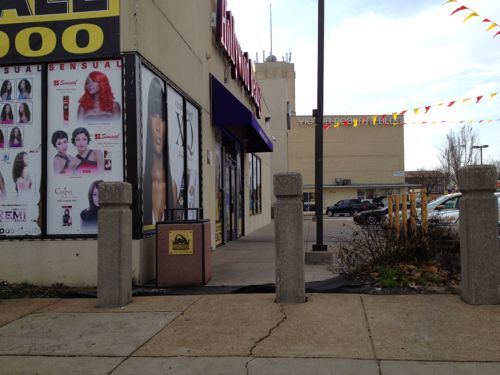Bus Rapid Transit (BRT) Not Right For St. Louis

When considering costly new transit infrastructure it’s import to look carefully at existing conditions — identifying problems and offering solutions that solve them without creating new ones. Many in St. Louis are now pushing for investing Bus Rapid Transit (BRT) in St. Louis. The most recent is for the Kingshighway corridor.
BRT is a form of bus line that uses a few key elements to increase speed compared to regular bus service. These include:
- Dedicated right-of-way (ROW)
- Off-board fare collection
- Traffic signal prioritization
- Platform-level boarding
BRT is widely recognized as offering greater efficiency than conventional bus routes at substantially less initial cost than light rail. Everyone of the above differences is about moving the bus faster from start to end, all are necessary to be considered BRT. To justify the up front cost there needs be significant improvement in performance.

BRT for Kingshighway is a solution looking for a problem. The article states investing to improve the system. Tens of millions spent on BRT on the Kingshighway corridor wouldn’t improve the transit experience for those who currently use the #95 Kingshighway MetroBus. We shouldn’t spend big money just to make non-riders all warm & fuzzy inside unless it gets them to go car-free.
Right now if a weekday #95 bus travels the 11-mile 95/Kingshighway route northbound, just before 8am, it takes 56 minutes end to end. Driving the same route takes only 30 minutes. How much would each of the above BRT changes improve speed?
Since St. Louis doesn’t have any traffic congestion to speak of, having dedicated ROW or lanes wouldn’t make any substantial difference. Yes, the sub-mile Kingshighway between I-64 and Lindell gets a little backed up at times, but this less than a 10th of the route.
The biggest difference in this area between driving a car or taking the bus is the convoluted route the bus must take to reach the CWE Transit Center — connecting to other bus routes and light rail. The BRT could stay in the center of Kingshighway, but the 10-15 minute walk to connections would offset any gains elsewhere.
Off-board fare-collection is definitely a way to reduce boarding times. What does this mean? Currently bus riders enter a bus at the front door, paying their fare as the pass the farebox. Off-board fares are collected before allowing the rider onto the platform — a closed/turnstile system. If the fare is already paid then boarding passengers can enter via both doors, reducing dwell time.
Turnstile systems are more expensive and require more space than open platforms. Metro plans to retrofit existing light rail stations to require payment to enter. Unless fare gates are full height able-bodied riders can jump over the turnstile to avoid fare payment. The better alternative is simply to eliminate fares altogether.
Signal prioritization is effective, the bus communicates with a traffic signal to keep their light green for just a little longer. Reducing time spent siting at lights.
Platform height boarding reduces the time necessary for most passengers to board. Because of the horizontal gap, us wheelchair users still need more time to board. Light rail vehicles have a narrow enough gap that it’s not a problem. Higher platforms with turnstiles are more expensive than a regular bus stop. To save more time the number of stops is reduced, requiring some riders to walk farther to catch the bus compared to the existing bus.
Millions of dollars might reduce the total time from 56 minutes to 50 — easily offset by increased time walking on one or both ends of the trip.
My approach is to list problems and solutions:
- Problem: #95 buses are often at capacity. Solution: use longer articulated buses like the ones used on the #70 Grand. Operate buses more frequently, also like the #70 Grand.
- Boarding takes too long. Solution: stop accepting paper tickets & transfers. Require use of the Gateway Card for fare payment, or eliminate fares completely. Build raised platforms.
I’m not sure what problem(s) BRT is supposed to solve.
— Steve Patterson